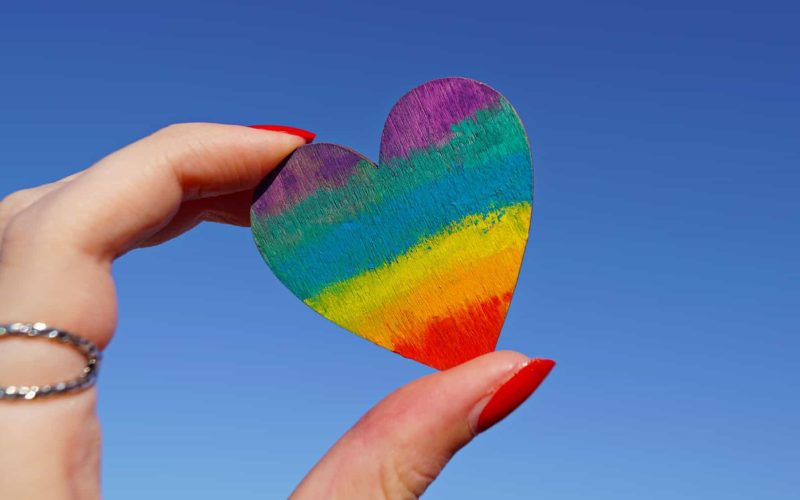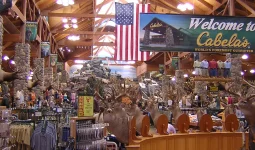The LGBT+ community has evolved and expanded over the years ever since coming to mainstream media. With this evolution however comes the need to find an identity, a label of some sort within the community.
Because of this need for makers, there exist numerous labels which may be a source of confusion to people who are just coming out of the closet.
As you are aware the umbrella term for the queer community is LGBT where L stands for Lesbian; G for Gay; B for Bisexual; and T for Transgender. What you may not know is the there are a lot more letters and identifiers within the community
Here is a glossary of terms used in the LGBT community.
1. Ally
Also known as a heterosexual ally or a straight ally, this is someone who is an advocate, or activist for LGBTQ people. A straight ally is also someone who confronts homophobia in themselves and others. The term ally is usually used for any member of a majority group who is an advocate, friend or activist for people in an oppressed group.
2. Androgynous
This used to describe an individual whose gender expression or identity is neither distinctively male nor female.
3. Aromantic
A romantic orientation generally characterized by the absence of romantic attraction or a desire for romance. Aromantic people can be satisfied by only by friendship and other non-romantic relationships.
4. Asexual
Also known as “Ace”. This can be used to describe anyone that does not feel sexual attraction to any gender. Asexuality cuts across sexualities which implies that one can be straight and still be asexual. There are degrees to asexuality.
5. Bicurious
This is used to describe someone who is unsure about their sexual orientation, but they are willing to explore.
6. Biphobia
This is the fear, hatred and intolerance of bisexual people.
7. Bisexual
This is someone who is physically, romantically or emotionally attracted to men and women.
8. Cisgender
This occurs when someone’s gender identity and expression matches the gender they are assigned to at birth.
9. Coming Out
This is the process of self –acceptance that lasts a lifetime. It is also used to describe making your sexual or gender identity known to the public.
10. Defamatory Language
These include but not limited to “fag,” “faggot,” “fairy”, “deviant”, “dyke,” “homo,” “sodomite,” “she-male,” “he-she,” “it,” “shim,” “tranny.”
11. Demisexual
This describes someone who cannot be sexually attracted to another unless they form a strong emotional connection with them.
12. Down Low
This is used to describe closeted gay men who identify as heterosexual but engage in sexual activity with other men. These men are more often than not in a heterosexual relationship with women. The term applies to majorly Black men.
13. Discrimination
These are acts of bigotry carried out by members of a dominant group against members of a marginalized or oppressed group.
14. Drag King
A person (usually a woman) who appears as a man. Generally in relation to an act or performance. This has no impact on the person’s gender identity.
15. Drag Queen
A person (usually a man) who appears as a woman. Generally in relation to an act or performance. This has no impact on the person’s gender identity. An example of a drag queen in pop culture is RuPaul.
16. Femmephobia
This is the hatred of people who are perceived to be feminine or effeminate regardless of their gender. It is the oppression of any who fall under the female end of the gender binary due to their fashion sense, mannerisms, and behavior.
17. Gay
The adjective used to describe people (usually men) who are physically, romantically, or emotionally attracted to people of the same sex.
18. Gender Expression
This is used to describe how a person expresses their gender. This may refer to their dress sense, their general appearance, the way they speak, or the way they carry themselves. Gender expression does not always correlate to an individuals’ gender identity or gender role.
19. Gender Fluid
A person whose gender identity and presentation shifts, whether within or outside of societal norms and expectations.
20. Gender Identity
This is a sense of one’s self as a man, woman, trans or any other gender identity. Since gender is a social construct, one’s gender identity may not tally with their gender at birth or be manifested in their outward appearance. An individual’s identity may be different from their sexual orientation.
21. Gender/Sex Reassignment Surgery
Refers to a surgical procedure to transition a transgender individual from their biological sex to another. This often occurs simultaneously with psychological assistance and hormone treatment.
A Transsexual individual will go through several years of hormones and psychological evaluation and live as the opposite gender to receiving treatment.
22. Gender Role
Society’s expectation of how an individual should behave, think, and feel based on an assigned gender with respect to society’s binary biological sex system.
23. Heteronormativity
This refers to a set of lifestyle norms, institutions, and practices that promote binary alignment of gender identity, biological sex, and gender roles.
It assumes heterosexuality as a fundamental and natural norm and puts monogamous relationships and procreative sex above all other sexual practices.
24. Heterosexuality
A sexual orientation which a person is strictly physically and emotionally attracted to the opposite sex.
25. Homophobia
Fear of lesbians and gay men. Also, an umbrella term used to describe prejudice and bigotry of people of the LGBT community.
26. Internalized Homophobia
The fear and hatred of one’s own sexual or gender identity that occurs for many individuals who have imbibed negative ideas about the identity from the environment around them.
Most times this internalized hate could have disastrous consequences as it is projected towards people with a similar identity.
27. Intersectionality
This is a term coined by professor Kimberlé Crenshaw in the 1980s to describe in a hierarchal method, multiple systems of oppression interact in the lives of those with multiple marginalized identities.
Intersectionality looks at the relationships between many marginalized identities, allowing us to analyse social problems fully, shape effective interventions, and promote more inclusive advocacy amongst communities.
28. Intersex
This is used to describe developing primary or secondary sex characteristics that do not fit into society’s definitions of female or male. Many visibly Intersex people are operated on in infancy or early childhood by doctors to make the child’s sex characteristics conform to society’s idea of what normal bodies should look like.
Intersex people are common, although society’s denial of their existence has allowed very little room for intersex issues to be discussed publicly. An outdated term used to describe intersex individuals is Hermaphrodite.
29. Lesbian
A woman whose is solely physically, romantically, emotionally attracted to other women. Some lesbians may identify themselves as gay.
30. LGBTQQIA
This is an acronym used to refer to all sexual identities that are not heterosexual: “Lesbian, Gay, Bisexual, Transgender/Transsexual, Questioning/Queer, Intersex, and Asexual.
31. MSM
A medical term used to describe men who have sex with men. They may or may not identify as bisexual or gay.
32. Pansexuality
This refers to a sexual orientation in which the individual’s attraction is not limited by sexuality, gender expression or gender identity. Also known as omnisexuality.
33. Queer
Formally a slur used to describe a gay man, queer has been reclaimed by some members of the LGBT, and it is now used to describe them. It is however not completely accepted even within the LGBT community and should be avoided unless someone identifies like that.
34. Questioning
The process of exploring one’s sexuality or gender identity.
35. Sexual Orientation
Sexual Orientation is the sexual, emotional, romantic non-attraction or attraction to other people. Sexual orientation may be fluid, and people use a variety of labels to describe their sexual orientation.
36. Transgender
This is used to describe sexual and gender identities and experiences of people whose gender identity and/or expression do not match their assigned sex at birth. Not all transgender people undergo a medical transition (surgery or hormones).
37. Transition
A process in which transgender people “switch” from one gender presentation to another. There are three general aspects to transitioning: and legal (i.e. gender marker and name change, medical (i.e. hormones, surgery, etc.), social (i.e. name, pronouns, interactions, etc.). A transgender individual may transition in any combination, or none, of these aspects.
38. Two-spirit
Used to describe people who have both feminine and masculine energies. Originally from Native American tribes.








